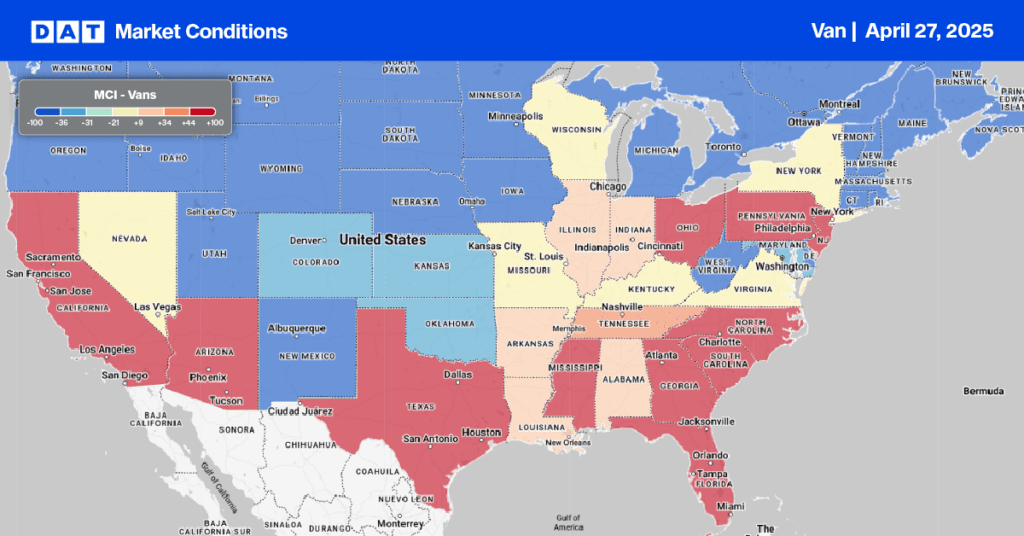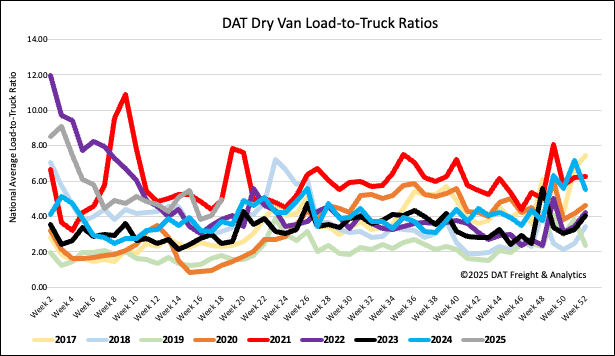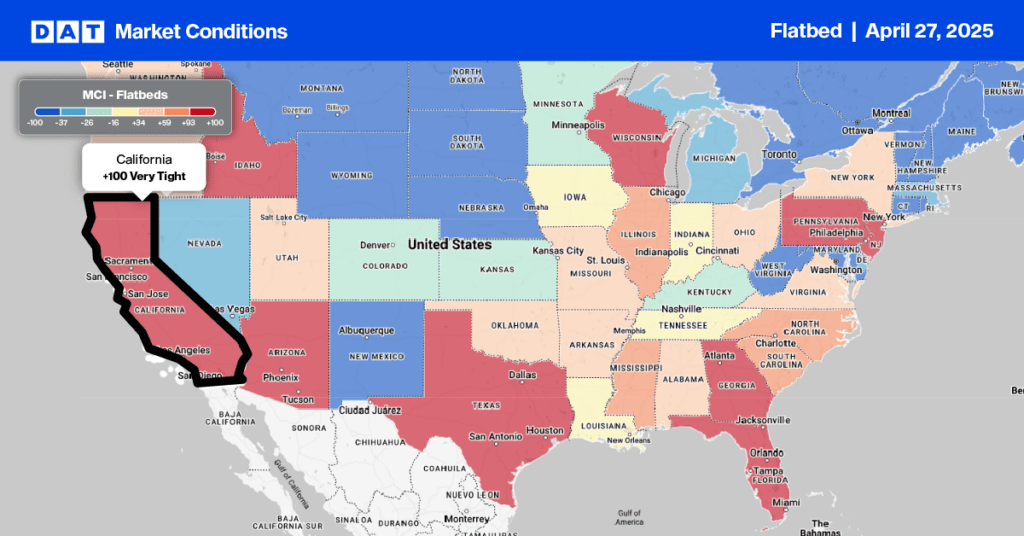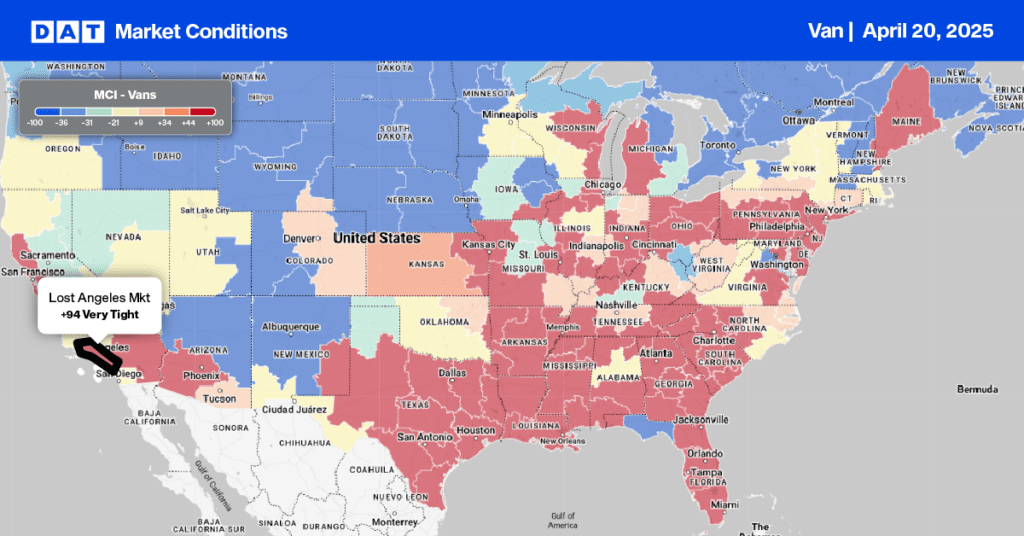The U.S. freight market slowed in March after a strong February, but first-quarter data for 2025 indicates a potential recovery was underway, according to the American Trucking Associations (ATA). Truck freight tonnage fell by 1.5% in March, following a 2.8% rise in February, with the seasonally adjusted For-Hire Truck Tonnage Index at 113.4, down from 115.1. However, the index showed a 0.2% increase compared to March 2024, marking the third consecutive year-over-year rise.
Get the clearest, most accurate view of the truckload marketplace with data from DAT iQ.
Tune into DAT iQ Live, live on YouTube or LinkedIn, 10am ET every Tuesday.
Bob Costello, ATA Chief Economist, noted. “That tells me that the freight market did in fact turn around in the first three months of the year despite an uncertain outlook.” The not seasonally adjusted index reached 114.6 in March, a 9.5% increase from February’s 104.7. Overall, the first quarter showed a slight increase in tonnage compared to the fourth and first quarters of 2024. “This is the first time in two years that the quarterly average increased sequentially and year-over-year,” Costello stated.

Load-to-Truck Ratio
Dry van load post volumes bounced back last week, increasing by 14% w/w and 13% y/y. As a result, last week’s dry van load-to-truck ratio (LTR) was up by 23% to 4.95, the highest in nine years for Week 17.

Linehaul spot rates
Dry van linehaul rates increased by almost a penny-per-mile to just $1.61/mile last week on a 3% lower load volume (loads moved). At $1.61/mile, linehaul rates are $0.06/mile higher than last year and identical to the 90-day trailing average.
On DAT’s Top 50 lanes, ranked by the volume of loads moved, carriers were paid an average of $1.89/mile, flat for the second week and $0.28/mile higher than the national 7-day rolling average spot rate.
In our Midwest Region bellwether states (n=13), which account for 46% of loads moved nationally last week and have the highest correlation to the national average, outbound spot rates were flat on a 2% lower volume of outbound loads moved. Inbound loads moved were down by 2% w/w also. Carriers were paid an average of $1.79/mile, $0.18/mile higher than the national 7-day rolling average.



